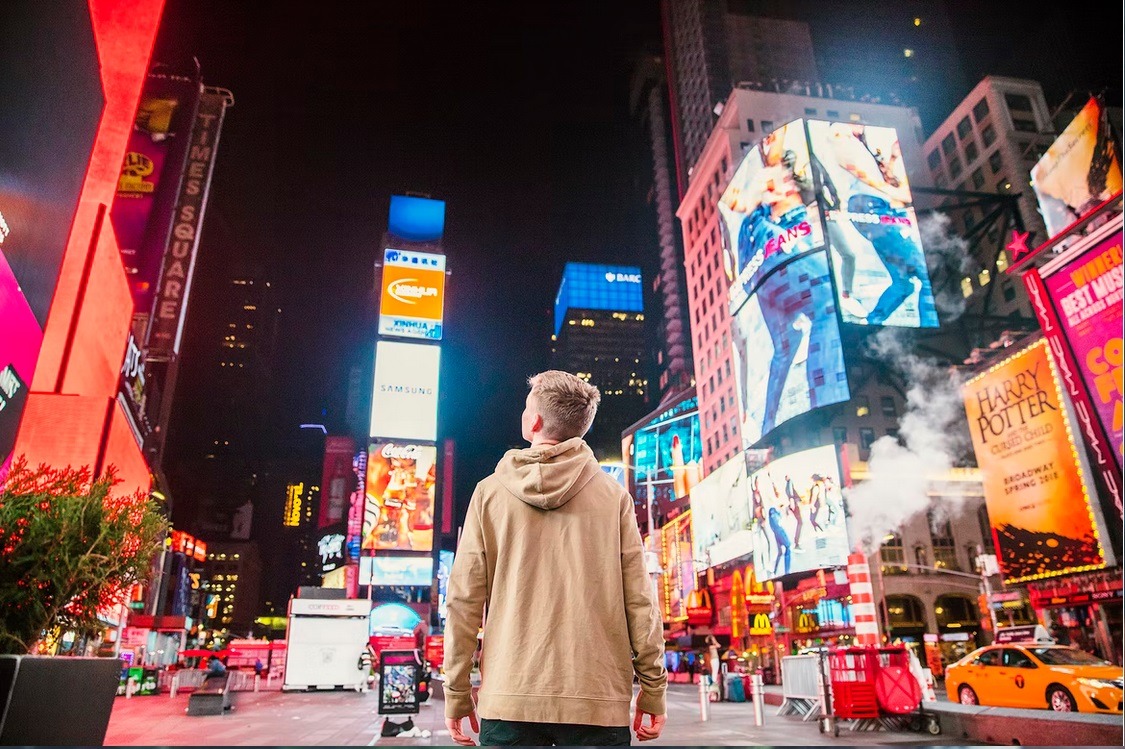Given how often many of us were left simply looking at screens during the COVID-19 pandemic, it shouldn’t overly surprise that digital fatigue has set in. In recent research mentioned on the Business Wire website, 52% of respondents reported reconnecting with the outdoors.
In 2021, 80% of survey respondents bought something after viewing an out-of-home (OOH) ad. OOH advertising comes in many different forms, including those listed below.
Billboards
These large-format posters tend to be displayed in high-traffic areas, and can be sorted into two distinct categories: those of static billboards and digital billboards.
Though billboards offer maximum impact and visibility as a result of being positioned alongside busy roads, digital billboards, with their high-quality LED displays, can stand out even more.
In one report cited by Entrepreneur Business Blog, 65% seeing a digital billboard acted on it, such as by visiting a website, storefront or social media channel belonging to the advertiser.
Transit advertising
This is where ads are placed on the likes of buses, trains and taxis — enabling the advertiser to easily promote their offerings to commuters and tourists.
Considering that public transport connections are abundant in large metropolitan areas, transit advertising can get your brand noticed by huge numbers of people.
Lamppost advertising
You might associate lampposts more with ‘Have you seen my cat’-style notices, but you could have too easily underestimated how effective lamppost advertising can be for helping to promote local events. You might even be planning to hold an event in a venue close to the lamppost itself.
Alternatively, you might be just sponsoring an event rather than holding it. The smallbusiness.co.uk website describes sponsorship as “often a very affordable and effective way of getting a brand out into the public eye.”
Bus shelter advertising
Naturally, there can also be an immense concentration of bus shelters in major cities and towns, providing you with many places where ads can be put up.
Especially conveniently, these ads will be in places where people often end up waiting for quite a while — giving each of these people plenty of time to notice the ad and scrutinize its content.
Shopping center advertising
One reason why this works well is that, if someone is at a shopping center in the first place, they are already looking to buy something.
So, investing in shopping center ads can help you plant the idea into the minds of shoppers that it is your brand in particular they ought to buy from. Basically, if whatever product or service you want to advertise is available at a shopping center, you should consider this type of advertising.
Point-of-sale advertising
If you fail to catch someone’s attention when they are approaching a shop, you might still stand a good chance of doing so when they are about to pay for something at that shop.
Point-of-sale advertising is a good option if you want to sell smaller items — like gum, beverages and gift cards — that would be on display near a shopper when they are almost at the payment stage.

